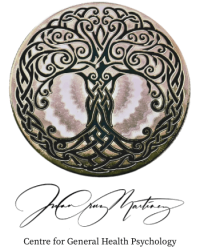MILESTONES IN ADOLESCENCE

“I am in the stage of stumbling, losing, failing, hurting, deceiving, humiliating, dominating, wavering, disordering, erring, but I know that I can learn to discover, dream, love, believe, imagine, advance and respect, enjoy, beat, walk, progress and know, because I am old enough to change”. González, O., Escuela de Padres de Adolescentes: Educar con talento (2016).
After years of being dependent on what others think about them, children from about the age of 10 to 12 begin to develop a more consistent sense of who they are. Gradually they are better able to develop an inner picture of themselves based on their emerging goals and values, and based on who they feel they are as people, rather tha how other people treat them from day to day. As a result, they become a little less influenced by the issues of the moment.
Children derive their internal picture of themselves and their values from interactions with family, friends, teachers, and others in their lives, and from their growing ability to see the world in more relative terms. During this phase they can hold in mind an emerging sense of their inner self at the same time that they are still buffeted by their relationships within their peer groups. They begin to embrace their own beliefs and to develop their own set of internal values (“I want to be a good student” or “I shouldn’t be mean“), and they begin to be able to think about the future (“I want to be a fireman” or “I want to be a teacher someday“). They can now hold on to two realities at once: their peer group reality and their emerging inner reality of values and attitudes.
Their self-esteem becomes, or should become, more stable at this stage, even during the ebbs and flows of their various relation- ships and events. They are able to see life in better perspective.
These years are also a scary time, as children begin to contemplate moving even further away from their families. Rocked by strong feelings, they may feel caught between their childhood longings for closeness and dependency and their desire to grow up and be teenagers and young adults. They may vacillate between these two desires. Sometimes they are defiant-“Who needs you?” or “I know better than you!”-yet at other times they’re fearful of their indepen- dence- “I don’t want to go to school. I just want to stay home!” They need an emerging sense of themselves to cling to. Without it, they may slip back to depending even more on their parents or, conversely, they may try to deny their dependency by taking more risks or getting more rebellious.
At this age, many children tend to avoid focusing on the sticky emotional challenges they face -separating from Mommy and Daddy on dealing with the opposite or same sex, for example. They may focus on their physical changes instead: Girls may complain of stomach-aches or headaches; boys may focus on the size of their penises or their muscles. Negative feelings about their bodies are not unusual.
Many new feelings emerge or become deeper in these years just before puberty. The capacity to empathize, the ability to put oneself in someone else’s shoes, really takes off. Children begin to understand the needs of others. For example, they are more capable of empathizing with a friend who has been rejected or who has hurt feelings. They feel loss and disappointment more keenly. They now have capacity for an adultlike sense of sadness that shouldn’t be trivialized. While at earlier stages children were able to talk about feeling sad only occasionally, such as when a friend moved away or a grandparent died, now they mourn such losses deeply.
As their cognitive abilities mature, children are more able to derive their moral and emotional strength internally, rather than from their friends or their family (“I want good grades so I can go to college” rather than “Mom says I need to work on my math home- work tonight or I’ll get into trouble“). They also begin to be able to express guilt, not because Mom or Dad got angry, but because “I didn’t study and was mean to my best friend.” Their consciences rather than the ever -present parental eye- begin to provide them with more moral guidance. They have a greater concern with right and wrong (for example, they may get interested in societal issues that involve people being treated unfairly). They are also more capable of understanding and following rules without outside guidance.
Children can now grasp the more intricate rules of social interactions. Eleven-year-old Tommy, for example, realizes that if Josh invites him to his birthday party, then he should probably invite Josh to his birthday party. Or Emily knows that it’s rude to laugh out loud while an adult is talking about something serious. At the same time, it is easier for a child at this stage of development to rationalize breaking the rules. That’s because along with this greater concern with right and wrong come more sophisticated reasoning powers that children use to try to get around rules. For example, when Emily giggles when her mother is talking about an uncle who had a heart attack, she can rationalize that “grown-ups get too serious and need to mellow out sometimes!”
Source: Greenspan, S. I., y Salmon, J. (1993)



